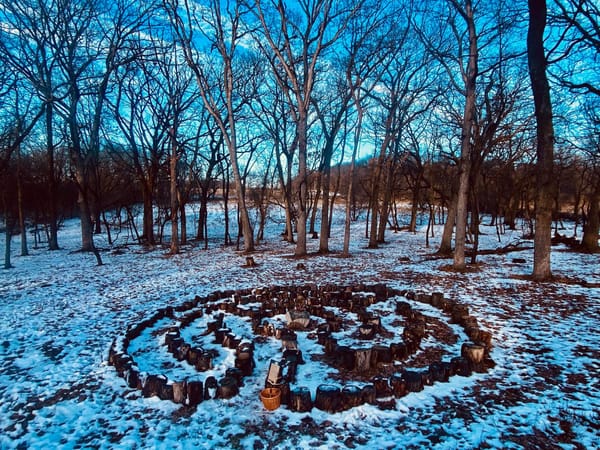Illinois EPA continues to receive help toward cleanup of decades-old Rockton Superfund site
Rockton Mayor John Peterson says, "My understanding is that this is not new money for the site."

Illinois Senators Tammy Duckworth (D-IL) and Dick Durbin (D-IL) announced on July 27, 2023 that the Illinois Environmental Protection Agency (EPA) will receive $1,681,556 "to conduct remedial actions at the Beloit Corporation Superfund hazardous waste site" in Rockton, Illinois.
However, Rockton Mayor John Peterson told us, "My understanding is that this is not new money for the site but a continued commitment to the cleanup of the US EPA Superfund site as it was prior to the Chemtool explosion. I appreciate the continued investment for the site’s groundwater monitoring and testing, and I am hopeful that the US EPA and IEPA will allocate additional funds to ensure safe drinking water for these residents."
No significant contaminants have been found in the Village of Rockton water system. But concerns about the groundwater in the Blackhawk Acres residential subdivision began in the 1980s. Because of high levels of volatile organic compounds (VOCs) [primarily tetrachloroethene (PCE) and 1,1,1-Trichloroethane (1,1,1-TCA)], the area was placed on the Superfund National Priority List (NPL) in 1990. The Blackhawk Acres is located southeast of the former Beloit Corporation site, whose facility was declared a Superfund site in 1990. Nationwide, more than 1,300 sites are on the National Priority List.
About Superfund
Superfund is the popular name for the 1980 Comprehensive Environmental Response, Compensation and Liability Act (CERCLA) passed Congress after the 1979 Love Canal disaster. The EPA website says, "When there is no viable responsible party, Superfund gives EPA the funds and authority to clean up contaminated sites." That certainly applies to the Beloit Corporation, which went bankrupt after its plant was added to the Superfund list. "It also forces the parties responsible for the contamination to either perform cleanups or reimburse the government for EPA-led cleanup work."
The senators gave no details about how the money would be used, but they say the funds are provided "through the U.S. EPA’s Superfund State Political Subdivision and Indian Tribe Site Specific Cooperative Agreements." The law allows Superfund money to be used by non-Federal entities, such as the State of Illinois or tribal governments.
Who is affected?
According to the EPA's 2004 Record of Decision [PDF], Rockton's Superfund NPL Site "is bounded on the north by Prairie Hill Road, on the west by the Rock River, on the south by a line projected from the Rock River along the south edge of a Village of Rockton easement and access road (for the village water tower) to Blackhawk Boulevard, and on the east by Blackhawk Boulevard. The NPL site area includes the Beloit Corporation property, the neighboring Blackhawk Acres subdivision, the former Soterion/United Recovery facility (Soterion), a portion of the Taylor, Inc. property and the Safe-T-Way property." In 2008, Chemtool built their factory on 20 acres of former Beloit Corporation property, downhill from Blackhawk Acres. Safe-T-Way moved to Rockford in 2001. Soterion seems to be out of business.
Before the Civil War, t he Beloit Corporation began making paper-making machines in Beloit, WI. In 1957, the company expanded into Rockton, turning farmland into industrial facilities. According to the EPA, "Solvents were used at the Beloit Corporation plant for parts cleaning operations. Non-chlorinated solvents were used until the mid 1970s and chlorinated solvents were used from the mid 1970s until 1983. The exact composition of the chlorinated solvents and the amounts used are unknown. From 1983 until the facility was closed in 1999, mineral spirits were used for metal degreasing and parts cleaning."
What has been done?
After the 2021 Chemtool fire, the EPA increased water testing in the adjacent Blackhawk Acres. This time, they found elevated levels of heavy metals but not of VOCs, which was the original concern. Before filing for bankruptcy in 1999, the Beloit Corp. installed a Interim Source Control Action (ISCA) pump-and-treat system in 1996 to remove VOCs from groundwater. The Illinois EPA began operating the system in 2002.
According to the EPA's 2004 Record of Decision [PDF], the Illinois EPA also installed point-of-entry carbon filtration units in 1993 in four Blackhawk Acres residences with private wells containing VOCs, mostly on Watts Avenue. Watts Avenue is near the Chemtool site, just west of North Blackhawk Blvd between Prairie Hill and the Taylor Company. In 1997, the EPA found many private wells in the Blackhawk Acres subdivision, with potentially ten of them at risk of VOCs. But as of 2021, the Winnebago County Health Department wasn't sure how many of those wells were still being used for drinking. All the homes in Blackhawk Acres should be connected now to the Village of Rockton water system. But as Dr. Sandra Martell at the Winnebago County Health Department told a media briefing in July 2021, "If you're a long time resident and you love that well water... you still drink it because it's your favorite taste, you might have more exposure."
In 1980, the initial concern wasn't the Beloit Corporation but the former Soterion/United Recovery facility. According to the EPA's 2004 Record of Decision [PDF], "the former Soterion facility is located at the southern limits of the Blackhawk Acres subdivision. This site consisted of four Quonset huts where waste cuttings from metal fabricating operations were processed before being recycled. Complaints of poor wastehandling practices at the facility and the detection of elevated VOC levels in many homes located on Watts Avenue near the Soterion facility prompted the Illinois EPA to conduct investigations from 1980 to 1982. During these investigations, the Illinois EPA documented releases of waste oils by Soterion to the ground, through the septic system and into a dry well located in front of the Soterion building at 900 Watts Avenue."
What more will be done?
In their July 27 news release, the Illinois senators seemed to confuse past events with current events, saying, "Volatile Organic Chemicals have been discovered on-site and in nearby residential wells." But that was in 1988. More recent groundwater tests after the 2021 Chemtool fire didn't show high levels of VOCs, even though the company admits the fire released nearly 58 tons of the chemicals. An estimated 77% was the solvent acetone.
The senators also belatedly noted, "To ensure the homeowners were not drinking contaminated water, carbon treatment units were installed in homes in the Blackhawk Acres Subdivision that had concentrations of trichloroethylene exceeding drinking water standards." But that was in 1993, in four homes.
Groundwater testing since 2021 has found no contaminants from the Chemtool fire, though some residents remain skeptical. Rockton Mayor John Peterson wants to make sure all Rockton residents can connect to the Village water system, which is safe to drink. He told us, "I appreciate the continued investment for the site’s groundwater monitoring and testing, and I am hopeful that the US EPA and IEPA will allocate additional funds to ensure safe drinking water for these residents."





